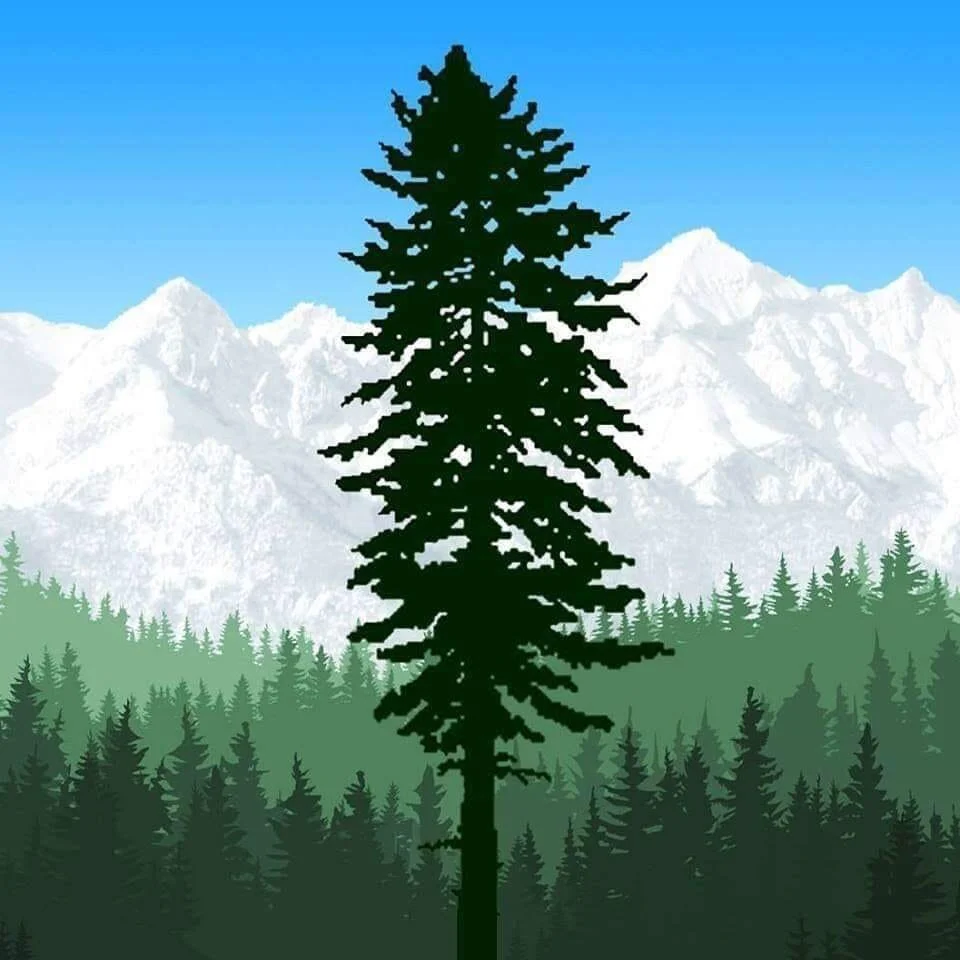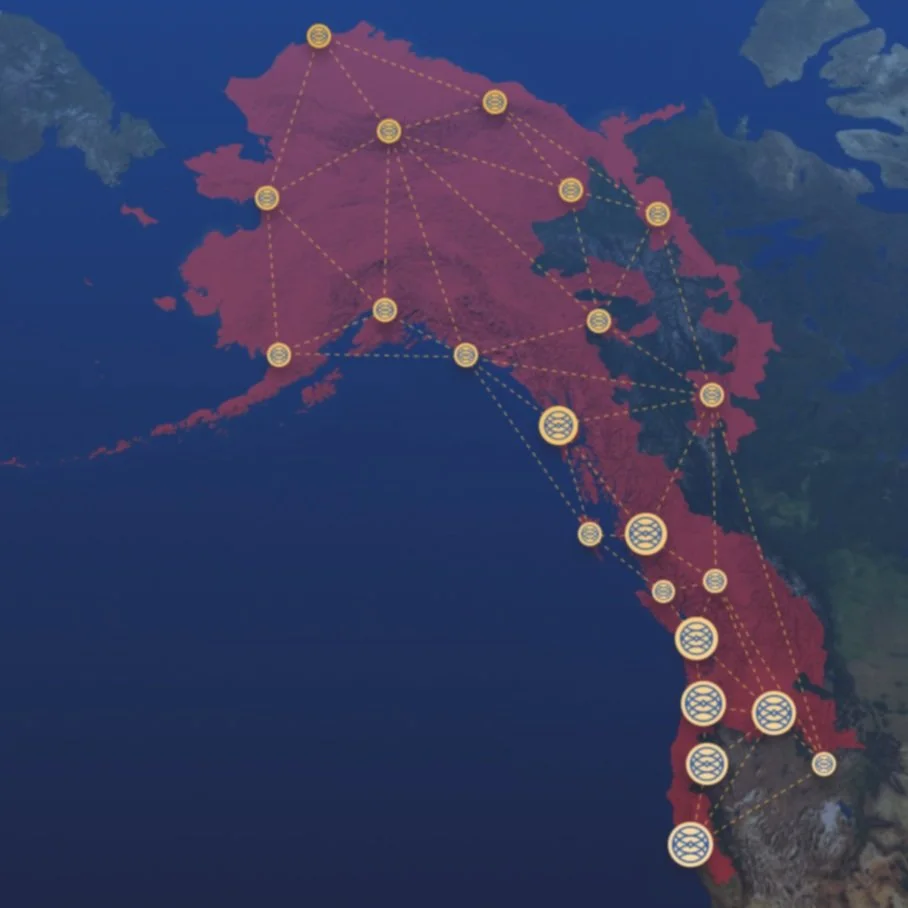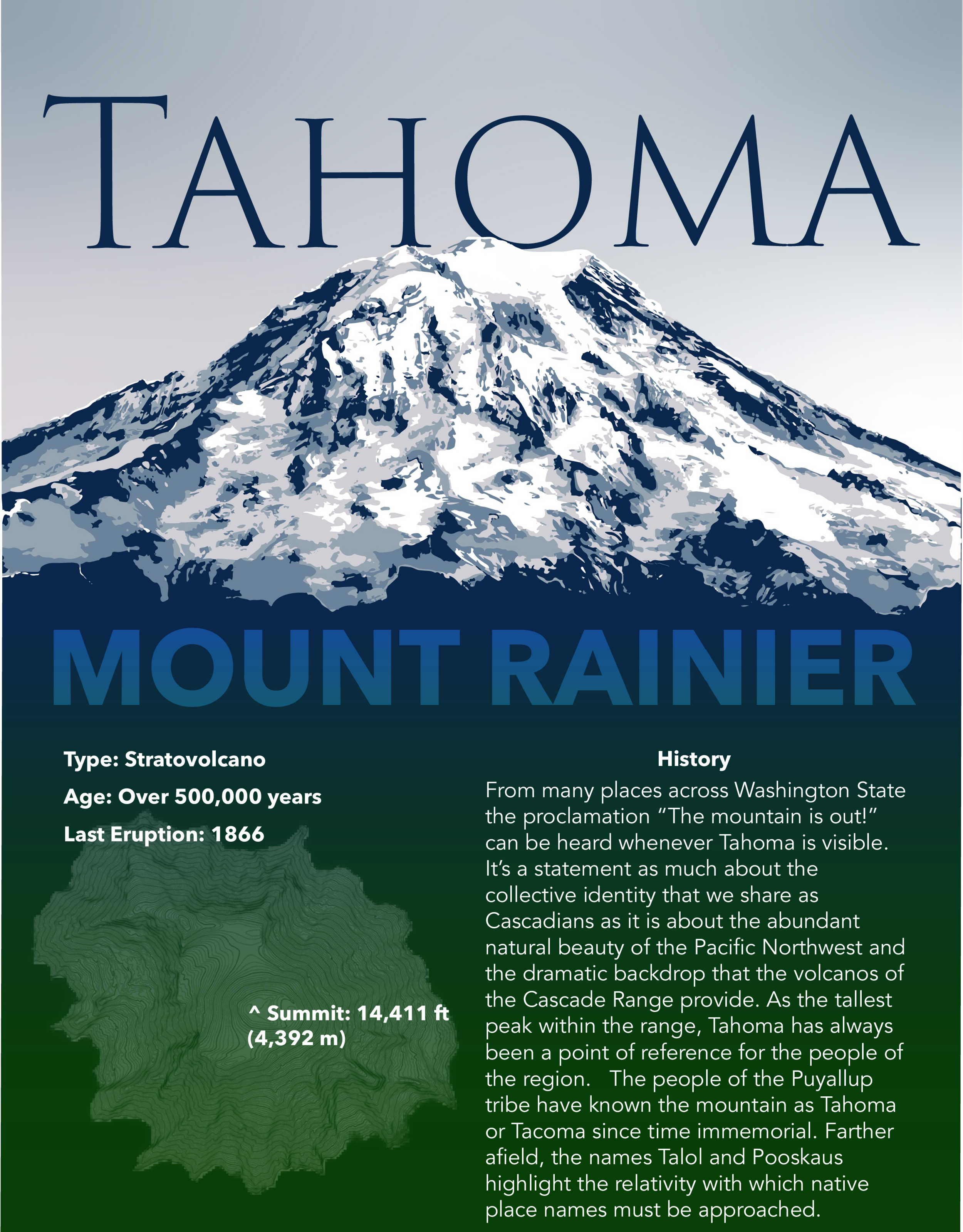A note on the Nez Perce Language! Nez Perce is a highly endangered language. While sources differ on the exact number of fluent speakers, it is almost definitely under 100.
De-colonizing Cascadia through Indigenous Storytelling
Tsalxhaan - At the Northern border of Cascadia
In a continuation of our Native Placenames series we present Tsalxhaan. This mountain at the norther boundry of the Cascadian bioregion between Alaska and British Columbia represents one of the most dramatic peak faces in the world as it raises to 5,325 feet (4671 meters) a mere 13 miles (20 kilometers) from the sea shore.
Native Place Names - From Tahoma to Rainier and back.
Native Place Names - How Wy'East (Mount Hood) came to be.
The native names for the mountains of the Cascade Range tell an engaging story, where the volcanoes becomes a community of dynamic and interconnected characters as they feature in myths and legends explaining how the land was formed and the millennia long relationship people have had with it. This article explores a creation myth told by the Multnomah people of how Wy’East (Mount Hood) came to be.
Klahowya Tilikum - How to open meetings and events in Cascadia
Klahowya Tilikum - Four simple steps to open meetings and events in #Cascadia with honor and recognition to indigenous culture, history and language
Demonstrating Cascadia Decolonization - Recognizing Indigenous History
Cascadia Solidarity with Carrizo/Comecrudo Earth Defenders as they protest US/Mexico Border Wall
Standing Rock Solidarity Network Resource Packet
While compiling notes for the creation of a Department of Bioregion Indigenous Solidarity Guide - we noticed that one of the primary tools - the Standing Rock Solidarity Resource Packet - is now offline, and that the mirror sites for most of it is now also offline. In an effort to preserve the lessons and wisdom learned from the Standing Rock Protests, we wanted to share our PDF’s for historical sake, but also in case they might be useful for future historians, students, activists and organizers.
















